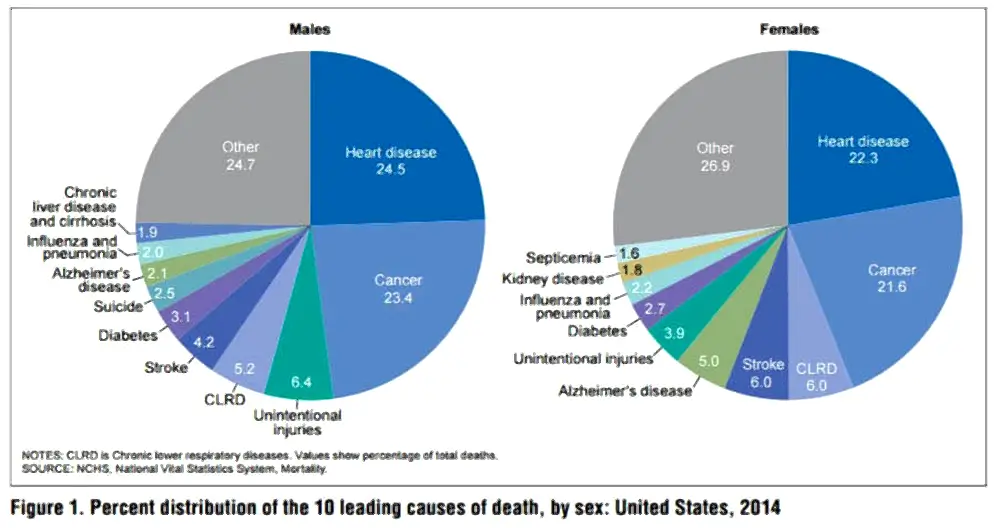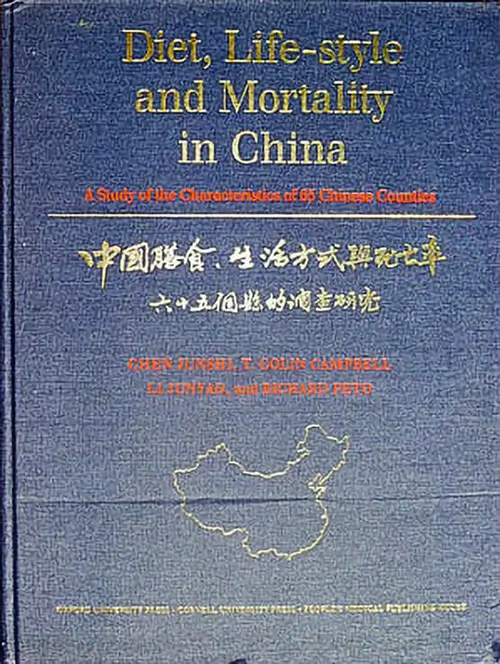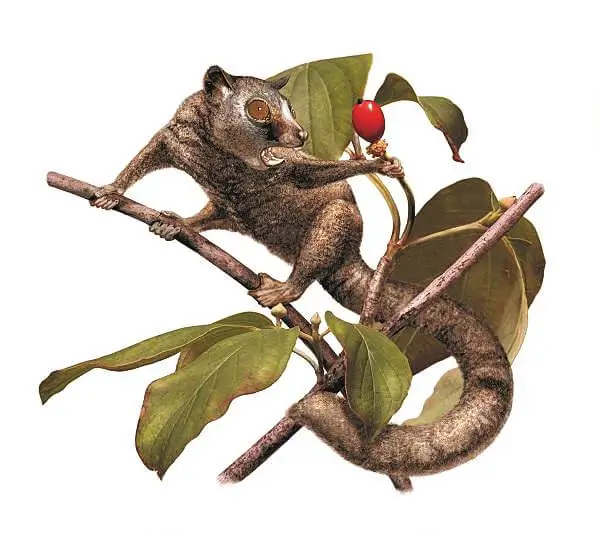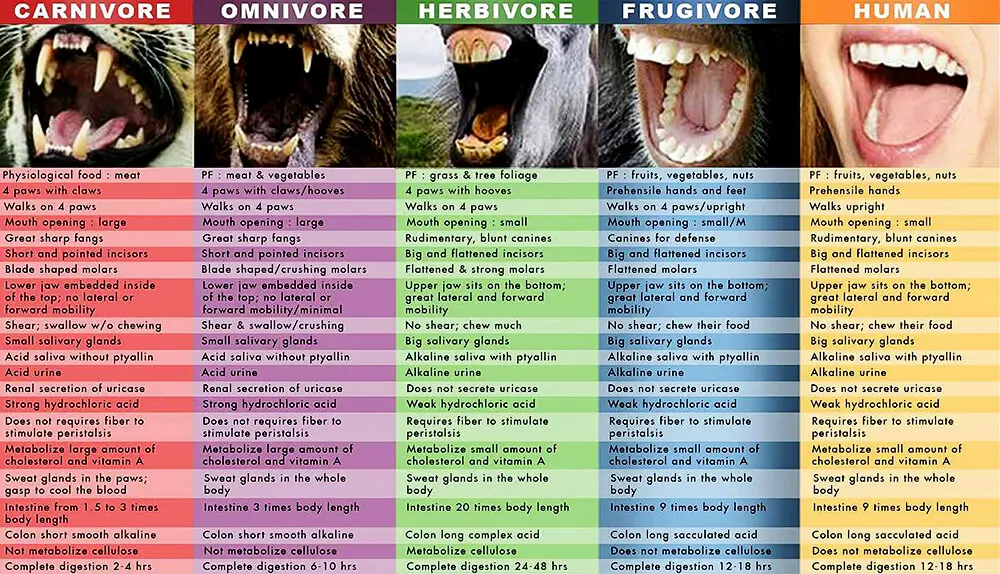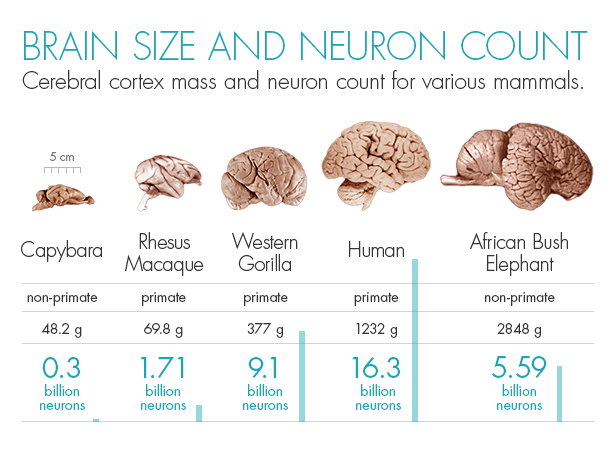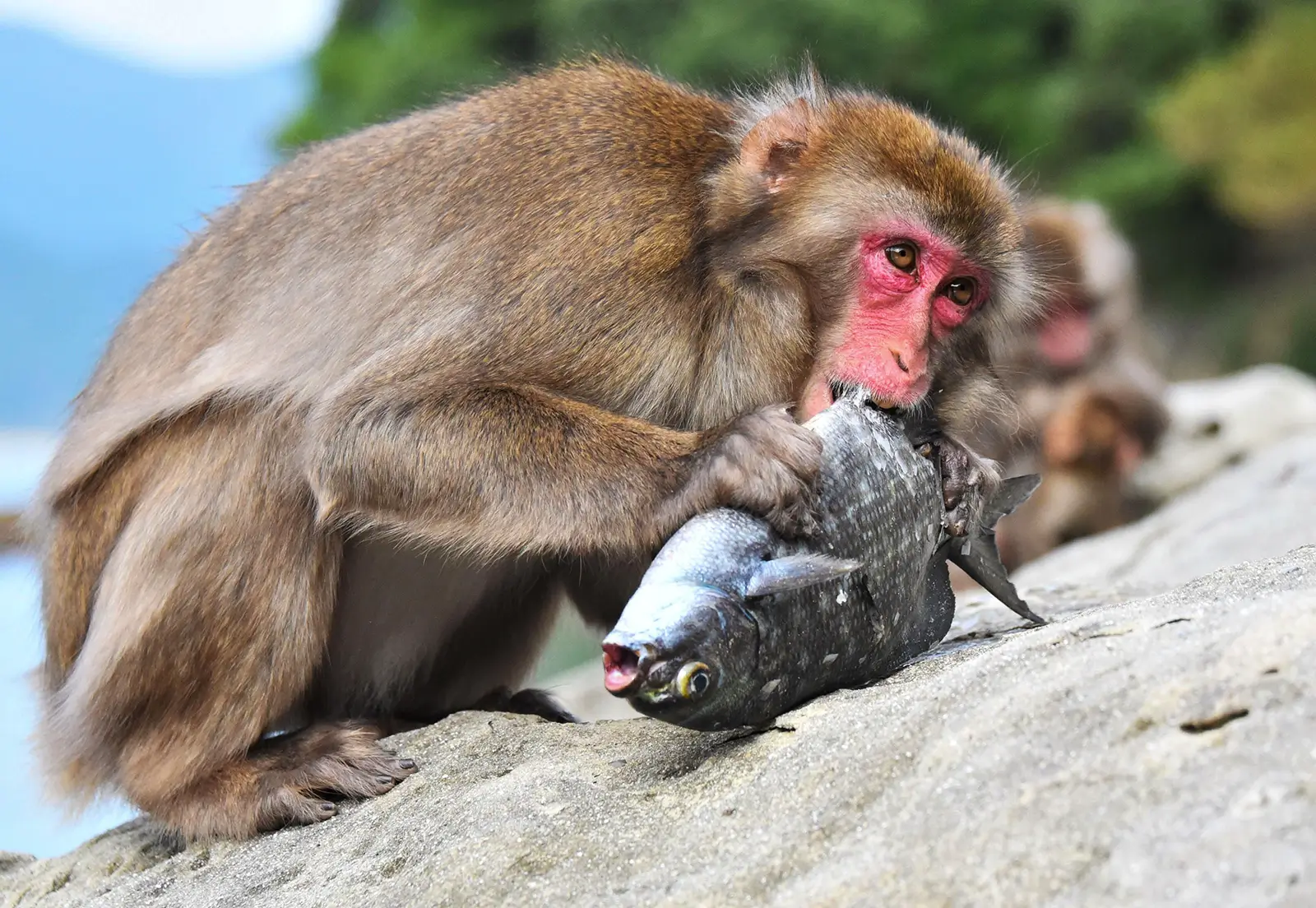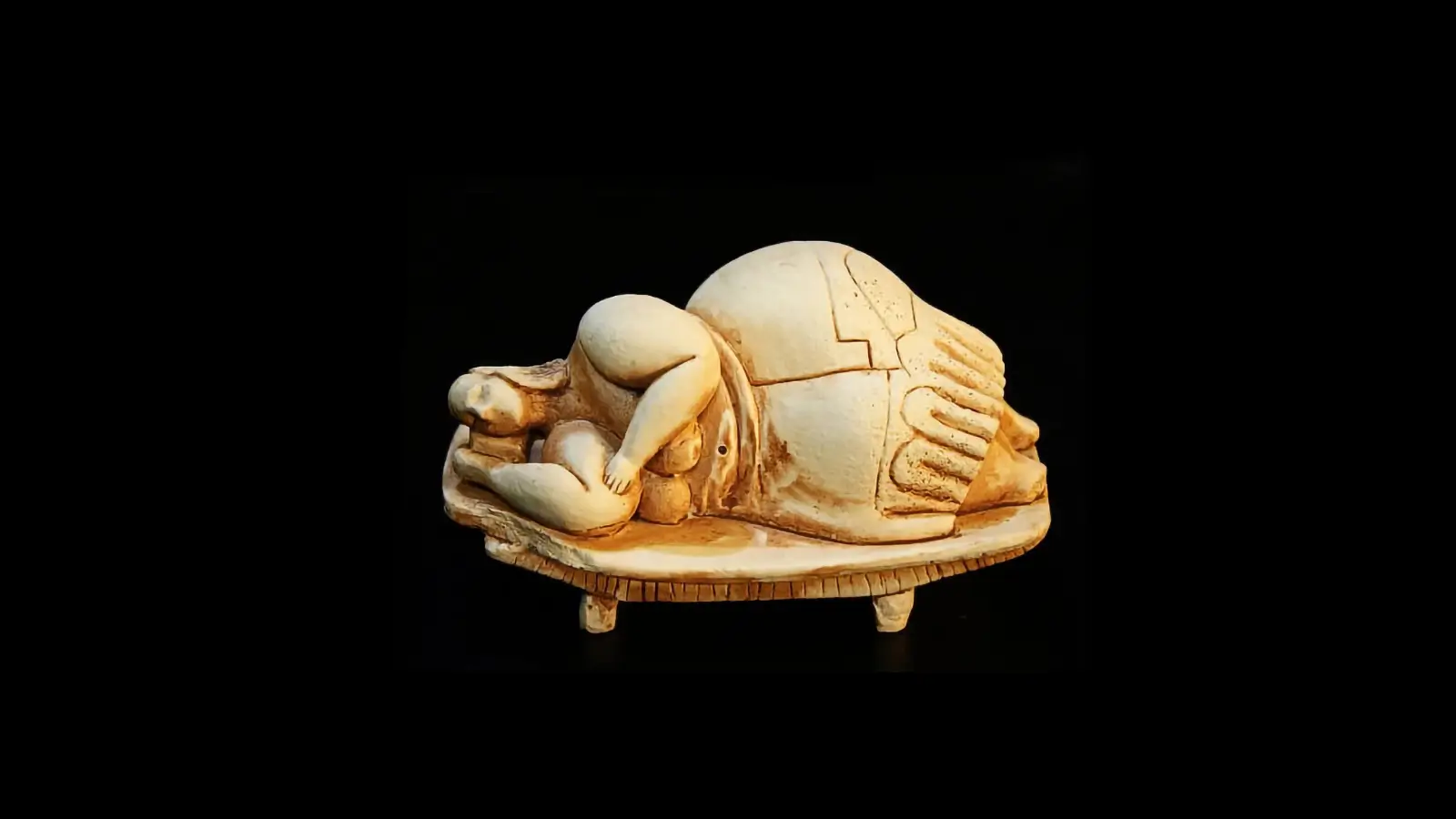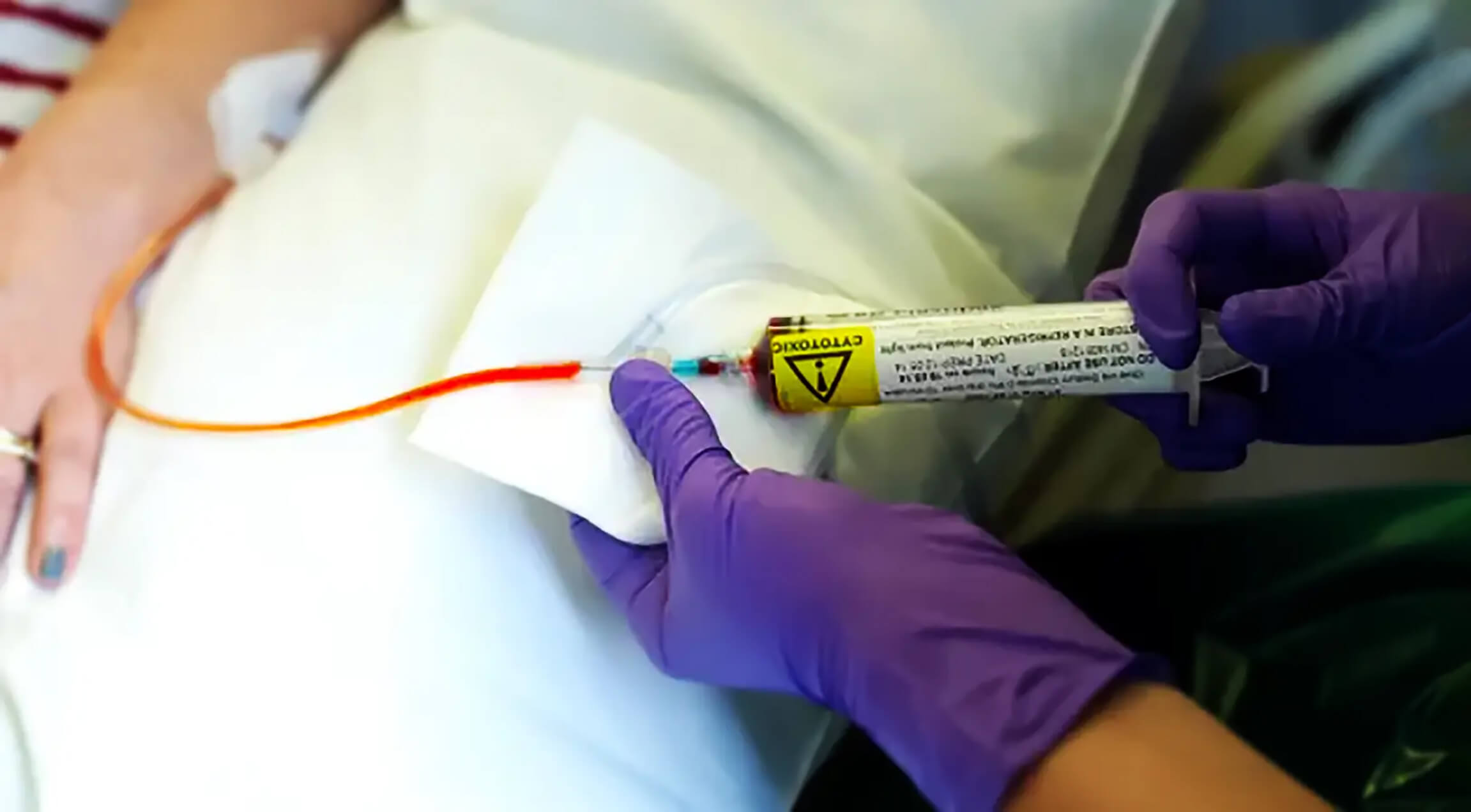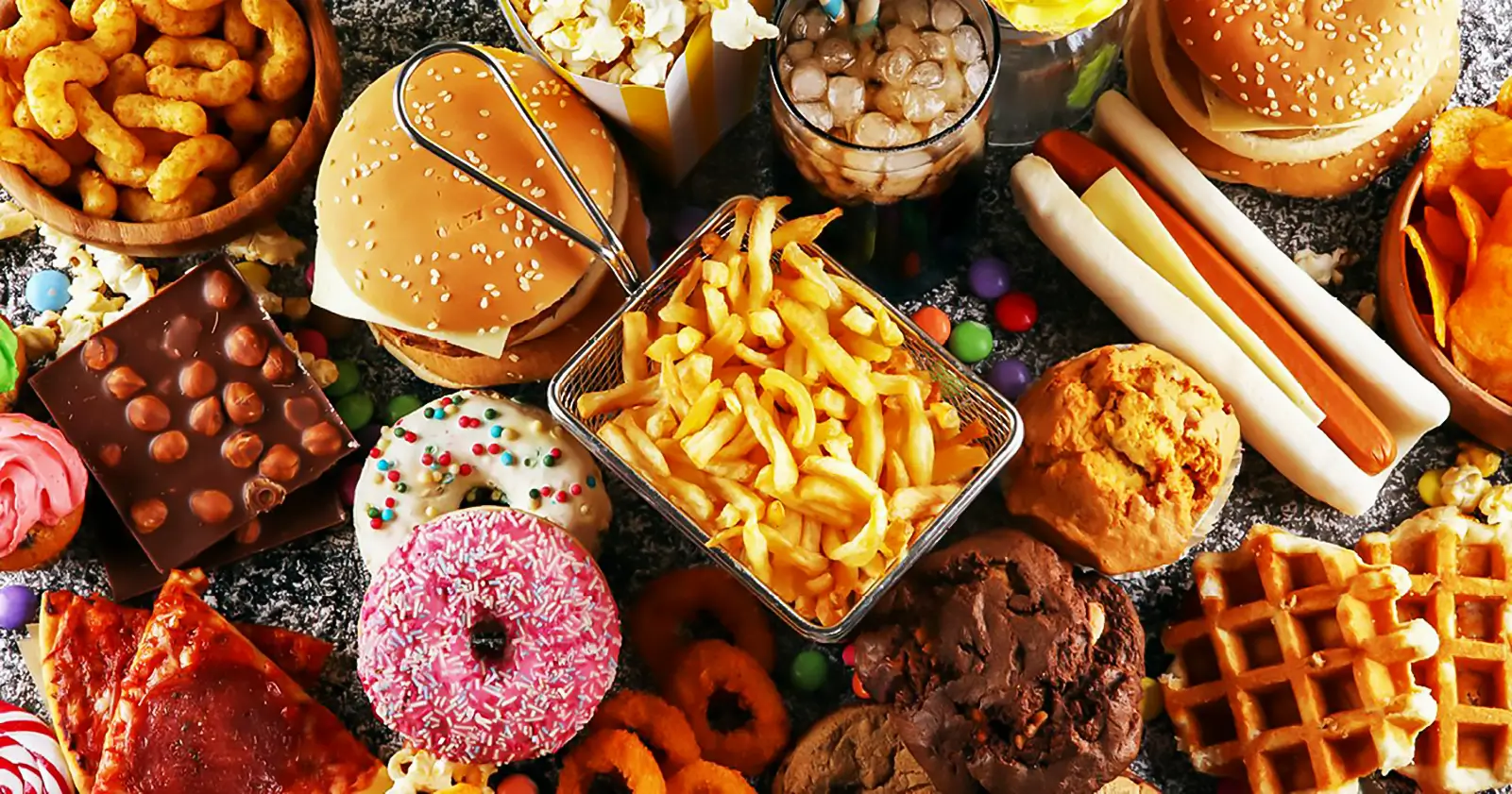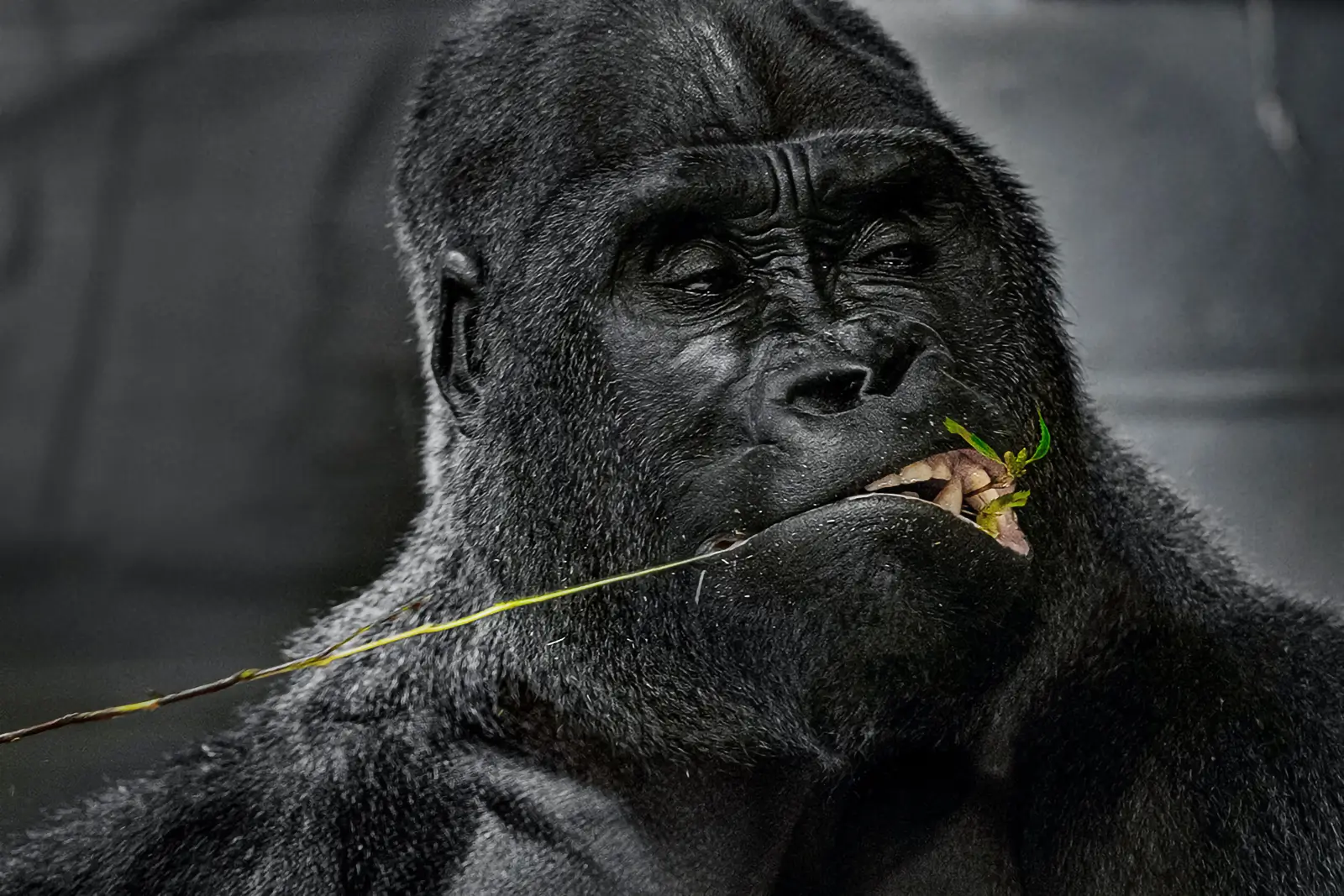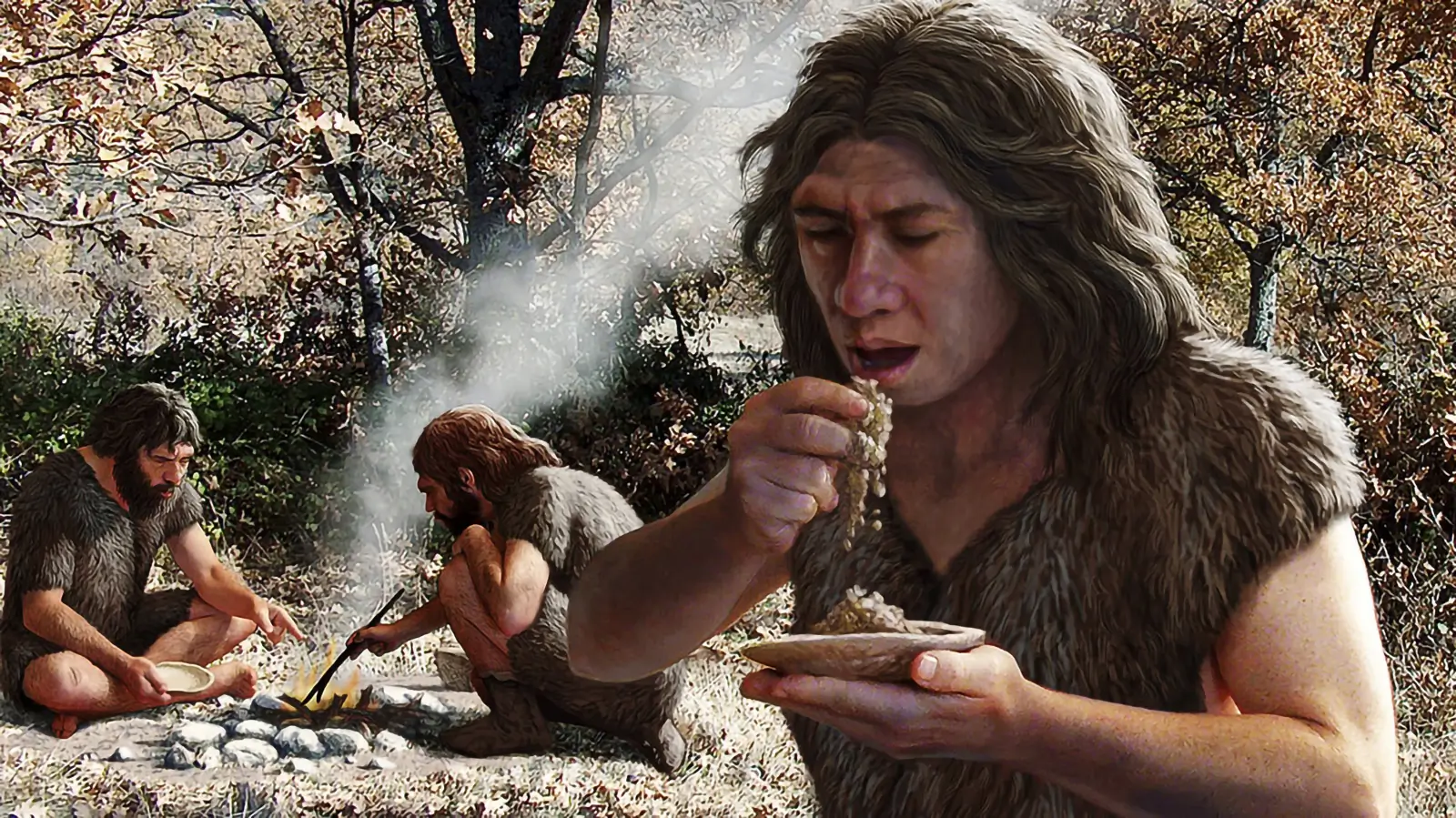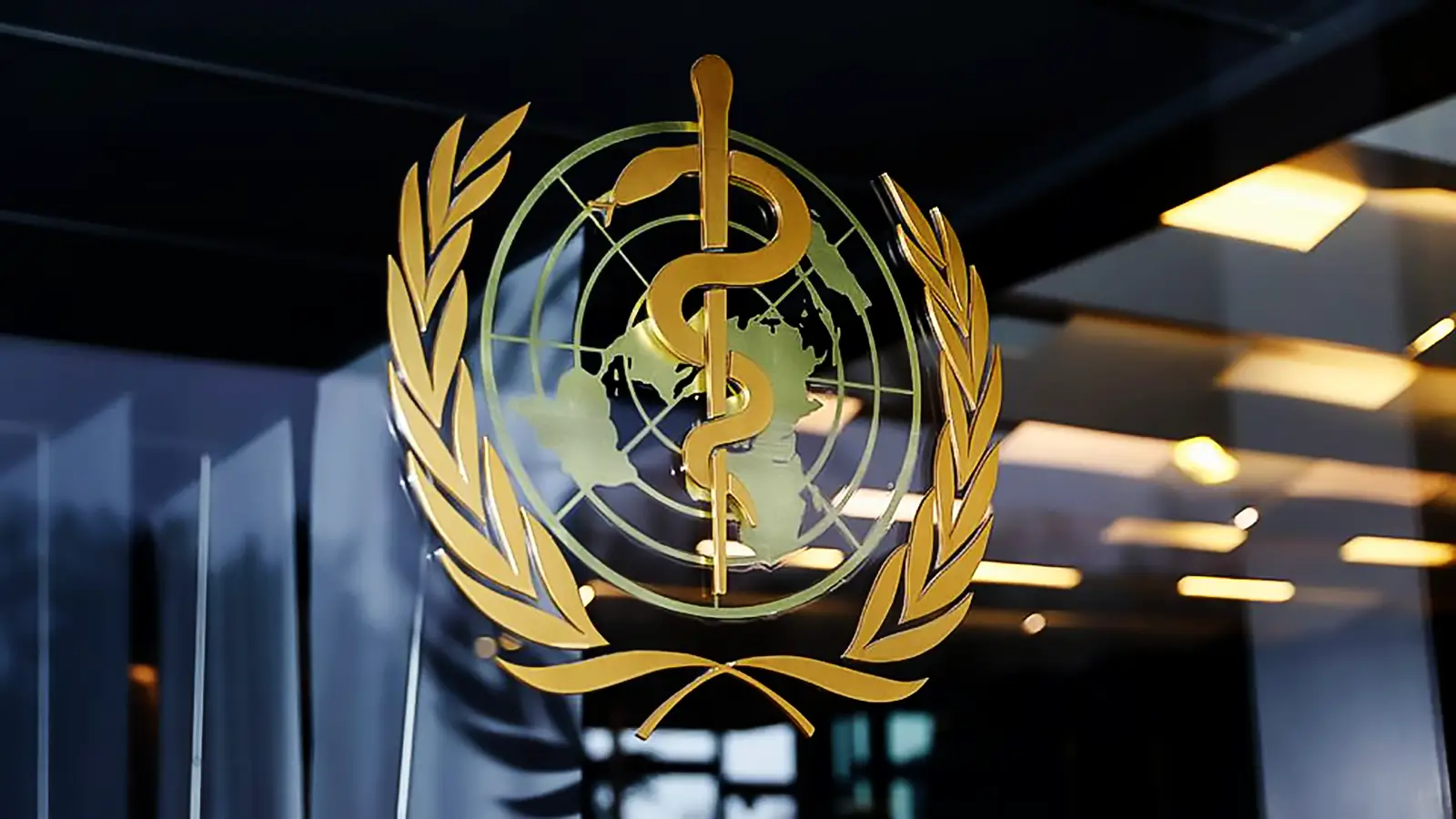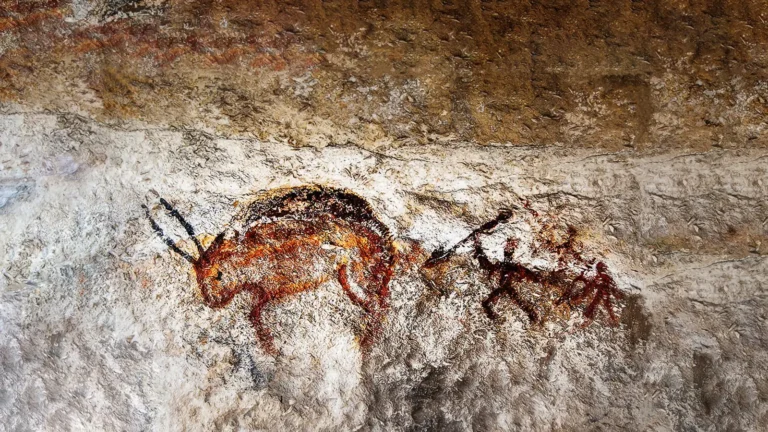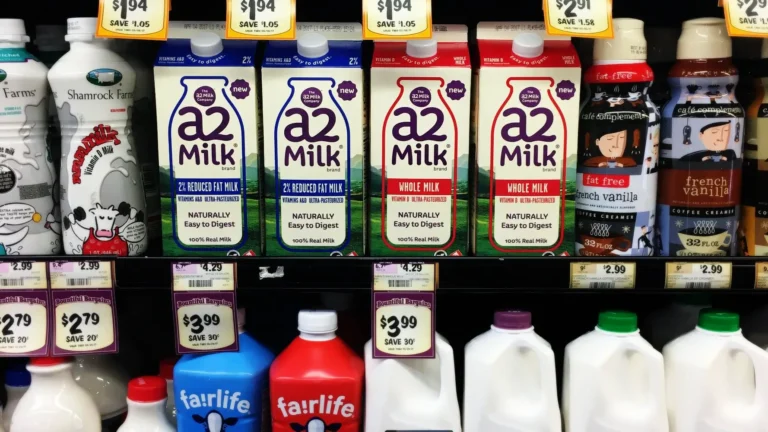Optimal Human Diet- Chronic Diseases, Diet Wars, and the Vegan Argument
Our natural optimal human diet is a diet that our hominin ancestors were eating for the last 30 million years, not anatomically modern humans in the Stone age.
Milos Pokimica
Written By: Milos Pokimica
Medically Reviewed by: Dr. Xiùying Wáng, M.D.
Updated August 4, 2023An optimal human diet is a basis for optimal health. When we look at the list of 15 leading causes of death more than 80% are lifestyle influenced. They are caused by our bad diet. In most cases, the disease is a choice.
It is not a bad genetic that gives us disease and that is a big open secret. For example, cancer is a preventable lifestyle disease. Real genetic causes are responsible for no more than 5% of all deaths. More than 85% of people die because of their bad diet.
Think about it this way. If you are born with the disease and it is a serious life-threatening condition, you will have to take your medications and manage your condition the best way you could. Problem is that just 100 years ago there was no insulin, chemotherapy, antibiotics, or any other medicine available. Any disease that will require any form of treatment was life-threatening and as a consequence would be selected against. In evolutionary terms, there would never be a statistically significant number of people from the overall population that has these forms of chronic diseases. They would not be able to survive and the genes would be selected against. For example, some level of cancer will be present and is present in wild animals today as well, but when we look at mortality charts we would see that almost one in every 4 people will die from cancer. The statistic for cancer mortality shows that 23.4% of all deaths are caused by cancer. This is not directly caused by bad genes.
There is one term that scientists use that is misleading. It is a term coined as “genetic predisposition” which means something completely different. The medical industry (allopathic medicine) that is based on interventional treatments and patented drugs will openly avoid this topic.
If there is an abrupt shift in our environment there is going to be maladaptation. Even if species survive the species’ diet would not be congruent with the current environment and in time it would have to adapt to a new environment or go extinct. Because of scientific progress and technology, it is exactly this maladaptation to our current human diet and environment that have created most of our diseases. If we have an evolutionary incongruent lifestyle and eat a diet that we are not adapted to eating depending on individual genetics different diseases will emerge. Someone will die from a heart attack, someone will have an autoimmune condition and a third person will have a stroke depending on their individual genetic predisposition. But this does not mean that we have bad genes, this means that we have a bad diet. That is a term that is used in medicine as a genetic predisposition.
The only real question is what is exactly the optimal human diet that will be in line with our evolution and that will decrease the risk of chronic diseases, increase the quality of life and prolong longevity. Also, we should not forget the cost of medical treatments.
It must be a Paleo diet then, right (Fenton et al., 2016), (Pitt, 2016)?
Practitioners of this type of diet are trying to simulate the conditions of living in Stone Age hunter-gatherer conditions. They are trying to eat a diet that is in line with the pseudo-hunter-gatherer lifestyle and give up modern agricultural inventions like dairy, agrarian products, and processed foods.
This was a mystery that ended more than 70 years ago. Nutritional science is not that difficult. All we need is to look at different groups of people that have different types of diets and then look at diseases that they will have. For example, we can go to the rural places of the world that have vegan diets because of poverty and we would compare the mortality rates.
There were studies like this done long ago like a famous China study that lasted for 20 years, or Adventist Health Study (Le, 2014), or even a study of the diet on the island of Crete after WW2 that has given rise to the popular “Mediterranean diet”. People that don’t know the real Mediterranean diet have nothing to do with olive oil or red vine and it was just a vegan diet in the rural population on the island of Crete. Research showed that these people do not suffer from diseases of affluence like heart disease. “Seven Country Study” was conducted in 1956 by Ancel Keys (Menotti et al., 2015), the same scientist that did the Minnesota Starvation Experiment. People on the island of Crete didn’t eat olive oil or cheese, they were barely surviving. That is it.
Science has gone far from that initial period but still, there is resilience to accept new dietary guidelines and the food pyramid is the same. Governments to this day just ignore science. This situation has created an environment where five different people promote five different types of diets preaching their own beliefs. I compare the situation with cigarette companies in the past that used false science and paid medical doctors to promote smoking as a healthy lifestyle choice.
Research has been available for more than five decades but still, we have a situation where diet wars are waging. In reality, even if you ask a nutritional expert why is a vegan diet associated with a lower risk of heart attack, cancer, diabetes, and all other diseases of affluence most likely he would not know the real answer.
It is because of evolutional adaptations. Carnivorous species for example never develop cardiovascular disease. They are adapted completely to meat-eating and cholesterol does not pose a risk to them.
In reality, we need to take a look at the lives of our ancestors over a long time spread than just the Paleo period. It took more than 50 million years to form our bodies. Physiology is passed, from one species to another. Hominins too had inherited their anatomy from species that came before them. All life on the planet actually can be traced back to single species.
How far do we need to go? As far as we need we can understand how evolutionary adaptations form. Then we would have a complete picture of what is our real natural diet.
The first mammalian forms evolved from the cynodonts during the early Norian Age of the Late Triassic, about 225 Mya. Early mammals mostly fed on insects. They were small shrew-like animals.
The starting point of the diet was predominately insects, but they started diversifying almost immediately. It took around 140 million years for the diet to shift from insects to fruits and leaves. Not 140 thousand years, 140 million years.
In an evolutionary sense when we look at the paleo diet or something our ancestors have eaten a couple of thousands of years ago is utterly irrelevant. Physiology does change, but it needs some time to do that.
Stem primates first appear in the fossil record between 65 and 55 million years ago. They may have been the first mammals to have fingernails in place of claws.
In time, they began to spend longer periods on lower branches of trees, feeding on fruits and nuts. At the 60 Mya mark, our ancestor species had started to eat plants. In time interval to 60 Mya evolution has diversified from eating just insects and living on the ground to fruits, nuts, and insects omnivorous diet, and semi-living on trees.
Next 10 to 20 Ma is approximately the time period when diet completely shifted. Eocene Epoch (55.8-33.9 million years ago) matches the appearance of the first species of placental mammals. These orders or in other words their descendants are still present today.
Primates diverged into two suborders Strepsirrhini (wet-nosed primates) and Haplorrhini (dry-nosed primates). The Haplorrhini liver was the first one that lost the ability to make its own vitamin C. What this means is that they have been eating too many plant foods already that their bodies decided to turn off production of the vitamin C to save energy. All of their descendant species had to include fruit in the diet because vitamin C must be obtained externally. Also, this is a significant factor. Humans today too must obtain vitamin C or we will suffer and die from scurvy.
What this means is that already the early primates were dependent on plant foods on such a level that their liver discontinued producing vitamin C. In carnivores species, because they eat only meat vitamin C is produced internally, and it is not a vitamin for them. When we start to consume plants and we start to consume them in a constant manner evolution shuts down everything that is not necessary. This can tell us a lot about the diet of early primates. They transmuted to fruits and leaves instead of insects. This is the adaptation that took tens of millions of years to complete.
The point is that evolution did not begin with the emergence of modern humans in a way it stopped there because modern humans exist only three hundred thousand years. That is an insignificant number in evolutionary terms. After the great extinction of non-avian dinosaurs, the first modern forms of mammals appeared 66 million years ago. They climbed to the trees and became completely herbivorous.
There is a big difference between real omnivores that can digest rotting meat and have short intestines and plant-eating species that need to eat constantly during the entire day to get enough calories for survival. Plant eaters have a colon that ferments fiber and much longer intestines. In reality, real omnivores need to have strong resistance filters like any other carnivore or they will die from bacterial food poisoning. Humans are not true anatomical omnivores and we need to use fire and cooking in order to digest animal products. Everything can be eaten and all of the primates will eat meat if they can but this process just by itself is not natural, it is sporadic and doesn’t result in physiological adaptations.
To the time when there was a significant climate change toward the end of the Pliocene, our ancestor species lived on trees evolving on fruit and green leaves and flowers only. They have grown in size and intelligence. Most of our brain, body, genetics, evolutionary biology and physiology evolved on trees.
At the end of the Pliocene (that lasted from two million to 10,000 years ago), weather circumstances started to shift. The Pleistocene was marked by a much colder climate and recurring glaciations of the northern hemisphere. So-called Ice Age. These conditions had to force our ancestors to adapt even more perhaps to become a new type of herbivore, one entirely dependent on social and technological innovation and not just foraging. Thus, forcing adaptation that requires to a great extent increased brainpower.
Brain size thus has nothing to do with meat consumption.
Fruits, flowers, green leaves and vegetables, underground storage units, and nuts and seeds with no meat, no dairy, and no eggs were a diet that created our organism in millions of years of evolution. In hominins from the genus Homo that evolved from Australopithecines, we can see more diversification about 3.5 million years ago. At that time some members also added grasses or sedges to their menus. For another million years that was the diet.
The earliest evidence for meat-eating in hominins dates to 2.5 Mya. Some of the fossil findings are consistent with scavenging activities with no hunting. Meaning bone marrow or insects or something in similar nature in no more than a couple of percent of overall calories. Something similar to the baboons’ or chimpanzees’ diets. This meat source was insignificant to the scale of producing any physiological adaptation that will translate to any evolutionary change in biology. The adoption of large-scale meat-eating may have necessitated advanced processing techniques, such as cooking, in part because raw meat is full of putrefying bad bacteria and other types of bad micro-organisms and parasites that will eventually kill us if are not killed by a thermal process. Thus limiting consumption in large quantities.
The limiting factor that a large number of scientists do not seem to understand is that meat spoils very quickly in the hot savanna conditions of Africa. In 2h, just two, it is gone. In 15 minutes there would already be insects crawling on top of the carcass and also there would be other predators looking for an easy meal.
In order to consume meat on a scale that will be significant to create an adaptation, it will have to be the staple of the diet with a calorie influx of at least 10 to 15 percent. That will be a real omnivorous diet. Without large-scale hunting on a daily basis, that is impossible. Without technology, like traps or spears, it is not a logical assumption and without cooking, it is 100%, not a viable option.
The first time in the evolution of the entire human species where meat consumption would be a reliable and sustainable source of calories would be in already modern humans that use technology. Even in the Paleo period, the real archeological evidence shows that meat was not a sustainable source of diet and that it was more in line with being an added benefit to foraging. Foraging was first and hunting second. The real Paleo diet is something completely different than what people would like to think.
An omnivorous diet is a wide range of diets. It might be 99% fruits and 1% of insects. True omnivores like bears can feed on carcasses. Our natural human diet is something that our hominin ancestors were eating, not anatomically modern humans in the Stone age. In reality, we can get away with some meat consumption without a dramatic increase in our chronic disease risk and science now has all of the answers (Sinha et al., 2009).
The problem is with us, people because we want our food to be a source of gratification and that is not food that exists in nature. Refined calories and animal products are not congruent with our biology and as a consequence, we will have to deal with an increase in disease risk. The first step in the prevention of chronic diseases is the lowering consumption of animal products and refined food.
If you have any dilemma about what is our natural human diet just go to nature. It is a human diet that we would be able to have without using technology like spears, traps, bows, and arrows.
References:
- Fenton, T. R., & Fenton, C. J. (2016). Paleo diet still lacks evidence. The American journal of clinical nutrition, 104(3), 844. https://doi.org/10.3945/ajcn.116.139006
- Pitt C. E. (2016). Cutting through the Paleo hype: The evidence for the Palaeolithic diet. Australian family physician, 45(1), 35–38. [PubMed]
- Le, L. T., & Sabaté, J. (2014). Beyond meatless, the health effects of vegan diets: findings from the Adventist cohorts. Nutrients, 6(6), 2131–2147. https://doi.org/10.3390/nu6062131
- Menotti, A., & Puddu, P. E. (2015). How the Seven Countries Study contributed to the definition and development of the Mediterranean diet concept: a 50-year journey. Nutrition, metabolism, and cardiovascular diseases : NMCD, 25(3), 245–252. https://doi.org/10.1016/j.numecd.2014.12.001
- Sinha, R., Cross, A. J., Graubard, B. I., Leitzmann, M. F., & Schatzkin, A. (2009). Meat intake and mortality: a prospective study of over half a million people. Archives of internal medicine, 169(6), 562–571. https://doi.org/10.1001/archinternmed.2009.6
Related Posts
Do you have any questions about nutrition and health?
I would love to hear from you and answer them in my next post. I appreciate your input and opinion and I look forward to hearing from you soon. I also invite you to follow us on Facebook, Instagram, and Pinterest for more diet, nutrition, and health content. You can leave a comment there and connect with other health enthusiasts, share your tips and experiences, and get support and encouragement from our team and community.
I hope that this post was informative and enjoyable for you and that you are prepared to apply the insights you learned. If you found this post helpful, please share it with your friends and family who might also benefit from it. You never know who might need some guidance and support on their health journey.
– You Might Also Like –

Learn About Nutrition
Milos Pokimica is a doctor of natural medicine, clinical nutritionist, medical health and nutrition writer, and nutritional science advisor. Author of the book series Go Vegan? Review of Science, he also operates the natural health website GoVeganWay.com
Medical Disclaimer
GoVeganWay.com brings you reviews of the latest nutrition and health-related research. The information provided represents the personal opinion of the author and is not intended nor implied to be a substitute for professional medical advice, diagnosis, or treatment. The information provided is for informational purposes only and is not intended to serve as a substitute for the consultation, diagnosis, and/or medical treatment of a qualified physician or healthcare provider.NEVER DISREGARD PROFESSIONAL MEDICAL ADVICE OR DELAY SEEKING MEDICAL TREATMENT BECAUSE OF SOMETHING YOU HAVE READ ON OR ACCESSED THROUGH GoVeganWay.com
NEVER APPLY ANY LIFESTYLE CHANGES OR ANY CHANGES AT ALL AS A CONSEQUENCE OF SOMETHING YOU HAVE READ IN GoVeganWay.com BEFORE CONSULTING LICENCED MEDICAL PRACTITIONER.
In the event of a medical emergency, call a doctor or 911 immediately. GoVeganWay.com does not recommend or endorse any specific groups, organizations, tests, physicians, products, procedures, opinions, or other information that may be mentioned inside.
Editor Picks –
Milos Pokimica is a doctor of natural medicine, clinical nutritionist, medical health and nutrition writer, and nutritional science advisor. Author of the book series Go Vegan? Review of Science, he also operates the natural health website GoVeganWay.com
Latest Articles –
Plant Based News
-
Epic Veggie Sandwich
on June 14, 2025
-
Vegan Cinnamon Slice
on June 13, 2025
-
The Secret To Vegan Meal Prep That Actually Works
on June 13, 2025
-
One-Dish Chickpea ‘Tuna’ Salad
on June 12, 2025
-
How To Build A Healthy Plant-Based Meal Plan That Lasts
on June 12, 2025
-
Garlic And Pepper Tofu
on June 11, 2025
-
A Week Of Vegan Dinners That Everyone Will Love
on June 11, 2025
Top Health News — ScienceDaily
- Sleep-in science: How 2 extra weekend hours can calm teen anxietyon June 13, 2025
Teens might finally have a good reason to sleep in on weekends within limits. A new study reveals that teenagers who get up to two extra hours of sleep on weekends show fewer anxiety symptoms than those who don t. But go beyond that sweet spot, and symptoms can actually increase.
- Johns Hopkins blood test detects tumor dna three years earlyon June 13, 2025
Researchers at Johns Hopkins found that fragments of tumor DNA can appear in the bloodstream up to three years before a cancer diagnosis, offering a potentially revolutionary window for early detection and treatment.
- Running rewires your brain cells—igniting memory-saving genes against alzheimer’son June 13, 2025
Scientists have uncovered how exercise directly influences brain health in Alzheimer’s disease by pinpointing the exact brain cells affected. Using cutting-edge RNA sequencing and mouse models, researchers identified changes in specific cells like microglia and a novel type of astrocyte after exercise.
- Guest molecules ride perfect waves in dna droplets—A breakthrough for synthetic biologyon June 13, 2025
Scientists have uncovered a previously unknown type of molecular motion inside DNA-based droplets: instead of spreading randomly, guest molecules advance in an organized wave. This surprising discovery opens the door to understanding how cells might organize internal processes without membranes. Using customizable DNA condensates as experimental models, the team showed how molecular waves emerge through precise DNA interactions. These insights could not only transform our grasp of cellular […]
- Beyond Ozempic: New weight loss drug rivals surgeryon June 12, 2025
Tufts University scientists are aiming to revolutionize the future of weight loss drugs by engineering a new compound that targets four gut hormones instead of the usual one to three. These next-gen tetra-functional peptides may overcome the limitations of current drugs like Ozempic and Mounjaro especially their nausea, muscle loss, and rebound weight gain.
- Brain-computer interface restores real-time speech in als patienton June 12, 2025
A team at UC Davis has made a major leap in neurotechnology, enabling a man with ALS to speak again through a brain-computer interface that converts thoughts into speech in real time. Unlike prior systems that translated neural signals into text, this one synthesizes actual voice with tone, pacing, and even melody, creating a near-conversational experience. The device interprets neural signals via implants and advanced AI, making it possible for users to speak new words, ask questions, and […]
- Scientists warn of bat virus just one mutation from infecting humanson June 12, 2025
Viruses closely related to the deadly MERS coronavirus are lurking in bats and one group, known as HKU5, may be just one mutation away from making the jump to humans. A new study reveals how these viruses bind to cell receptors and even shows signs of adapting to human-compatible versions of those receptors.
PubMed, #vegan-diet –
- Protein Intake and Protein Quality Patterns in New Zealand Vegan Diets: An Observational Analysis Using Dynamic Time Warpingon June 13, 2025
Background/Objectives: Inadequate intake of indispensable amino acids (IAAs) is a significant challenge in vegan diets. Since IAAs are not produced or stored over long durations in the human body, regular and balanced dietary protein consumption throughout the day is essential for metabolic function. The objective of this study is to investigate the variation in protein and IAA intake across 24 h among New Zealand vegans with time-series clustering, using Dynamic Time Warping (DTW). Methods:…
- Diet and nutrition in cardiovascular disease prevention: a scientific statement of the European Association of Preventive Cardiology and the Association of Cardiovascular Nursing & Allied Professions…on June 12, 2025
What we eat is a cornerstone of cardiovascular disease (CVD) prevention, but health professionals may not have a clear understanding of the current evidence-based research to underpin eating habits and recommendations. This study aims to appraise existing evidence-based research on the importance of diet on CVD risk biomarkers, specifically, the effects of dietary patterns, specific foods, and constituents including vitamins/minerals and plant-derived bioactive compounds on CVD risk. […]
- Synergistic Effects of Steam Impinged Microwave-Vacuum Blanching on the Textural Behavior of Vegan Pattieson June 11, 2025
The present study was carried out to understand the effect of the process variables of the combined microwave-vacuum-steam blanching process on the textural behavior of vegan patties. This novel blanching technique was systematically evaluated to optimize parameters, including microwave power density (3.8 W/g), steam duration (3 s), pea-to-potato mash ratio (0.252), patty thickness (0.866 cm), and microwave irradiation time (133 s). Fourier transform infrared (FTIR) spectroscopy was employed […]
- Plant-based diet and risk of osteoporosis: A systematic review and meta-analysison June 10, 2025
CONCLUSIONS: This systematic review and meta-analysis indicate that adherence to plant-based diet may be associated with an elevated risk of osteoporosis, particularly at the lumbar spine, among individuals following a vegan diet or following a plant-based diet for ≥10 y. However, the heterogeneity observed across studies highlights the need for well-designed prospective studies in future, to clarify this relationship.
- Plant-based diets for sustainability and health – but are we ignoring vital micronutrients?on June 9, 2025
Plant-based diets, with limited quantities of animal foods, are increasingly promoted for sustainability and health. In many countries, animal-source foods provide the majority of several micronutrients at a population level; in the UK, milk and dairy products contribute around one third of total calcium, vitamin B(12) and iodine intake in adults. Recommendations for a predominantly plant-based diet may have the unintended consequence of reducing intake of micronutrients, particularly in […]
Random Posts –
Featured Posts –

Latest from PubMed, #plant-based diet –
- Pre-Conception Physical Activity and the Risk of Gestational Diabetes Mellitus: Findings from the BORN 2020 Studyby Antigoni Tranidou on June 13, 2025
Background/Objectives: Pre-conception health behaviors may influence the risk of gestational diabetes mellitus (GDM), but evidence on the joint effects of physical activity (PA) and dietary patterns remains limited. This study investigated the associations between pre-conception PA and GDM risk and explored their interaction with adherence to a Mediterranean diet (MD). Methods: This analysis used data from the BORN2020 cohort, which included pregnant women in Greece (2020-2022). […]
- Protein Intake and Protein Quality Patterns in New Zealand Vegan Diets: An Observational Analysis Using Dynamic Time Warpingby Bi Xue Patricia Soh on June 13, 2025
Background/Objectives: Inadequate intake of indispensable amino acids (IAAs) is a significant challenge in vegan diets. Since IAAs are not produced or stored over long durations in the human body, regular and balanced dietary protein consumption throughout the day is essential for metabolic function. The objective of this study is to investigate the variation in protein and IAA intake across 24 h among New Zealand vegans with time-series clustering, using Dynamic Time Warping (DTW). Methods:…
- Exploring the Benefits of Extra Virgin Olive Oil on Cardiovascular Health Enhancement and Disease Prevention: A Systematic Reviewby Sara Ussia on June 13, 2025
Introduction: Olive oil’s health benefits are widely known and extensively documented; its advantages are widespread, covering numerous areas of human health. Clinical and experimental data indicate that a Mediterranean Diet (MedDiet) with Extra Virgin Olive Oil (EVOO) lowers the risk of illnesses associated with oxidative stress, chronic inflammation, and weakened immunity, including cancer and cardiovascular disease (CVD). The European Food Safety Authority (EFSA) confirms that olive oil’s…
- Association Between Dietary Protein Sources and Nutrient Intake in the Diet of Canadian Childrenby Hrvoje Fabek on June 13, 2025
CONCLUSIONS: An approximate 3:1 ratio of animal-to-plant protein sources may represent an optimal balance for supporting nutrient intake and improving macronutrient profiles in the diets of Canadian children.
- Diet in Knee Osteoarthritis-Myths and Factsby Natalia Kasprzyk on June 13, 2025
Knee osteoarthritis (OA) is a common degenerative joint disease affecting global health. Its increasing prevalence, particularly among aging populations, remains a leading cause of disability. Besides conventional pharmacological and surgical treatments, dietary interventions are promising strategies to alleviate OA symptoms and progression. Unfortunately, scientific evidence does not support many commonly used, misleading ideas about nutrition in knee OA. Recent data highlight the […]
- Adherence to the Planetary Health Diet and Its Association with Diet Quality and Environmental Outcomes in Croatian University Students: A Cross-Sectional Studyby Gordana Kenđel Jovanović on June 13, 2025
CONCLUSIONS: This study highlights the moderate sustainability of students’ diets, with significant associations between diet quality and environmental impacts. University settings present key opportunities for the promotion of sustainable, health-oriented eating behaviors among young adults.
